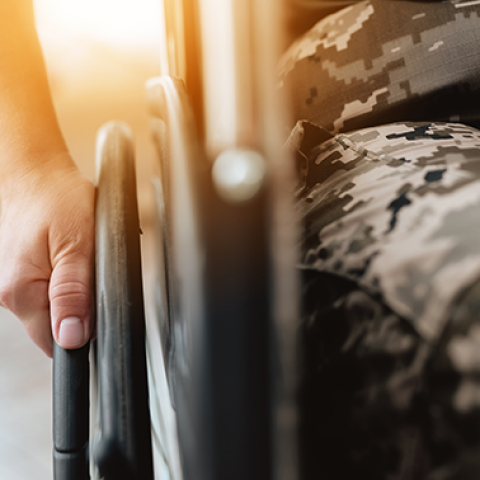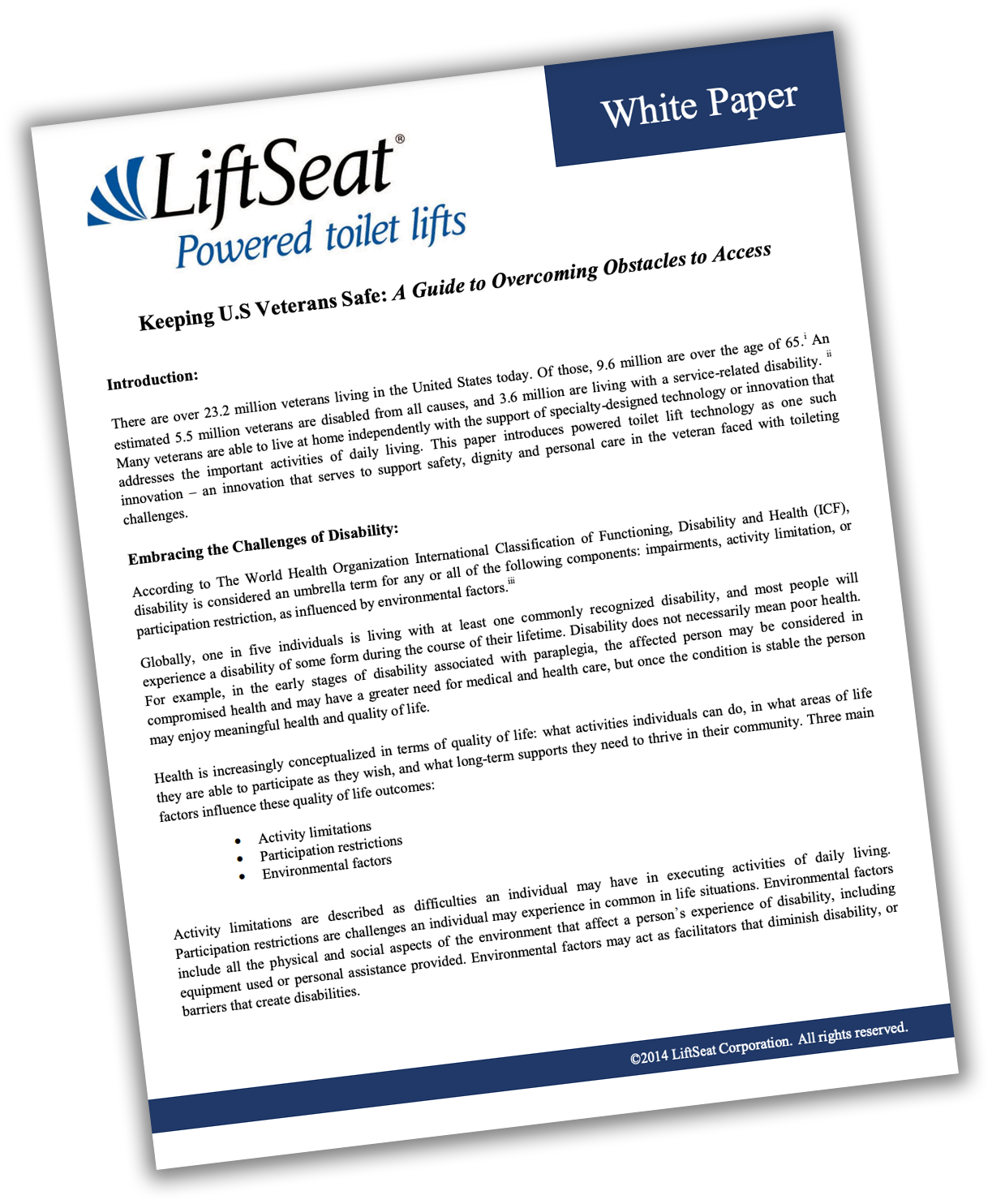From Service to Struggle: Uncovering the Impact of ALS in the Veteran Community
11/28/2023
Each year, roughly 2 in every 100,000 people are diagnosed with ALS.1 Currently in the US, there are thought to be somewhere between 15,000-21,000 individuals currently living with ALS, making this disease rare within the general population.
Within the veteran community, however, ALS tells a different story. Veterans are 60% more likely to develop ALS that their civilian counterparts.2 Research into why this devastating disease is disproportionately affecting this community is on-going, but with each veteran who shares their story, awareness is growing – and so is support.
What Is ALS?
ALS, which stands for amyotrophic lateral sclerosis, “is a progressive neurodegenerative disease that affects nerve cells in the brain and spinal cord.” Also historically known as “Lou Gehrig’s Disease” (after the famous baseball player who helped bring early awareness to this disease in the 1930’s) ALS is fairly well-known today, thanks in part to the ALS Ice Bucket Challenge that went viral in 2014 and helped raise over $115 million for research3.
The causes of ALS are still largely unknown. Within the last few years, researchers gained important insight into the TDP-43 protein, which is associated with ALS as well as other neurogenerative diseases.4 This breakthrough is an important step in learning more about how ALS develops but doesn’t give a definitive answer on why some people develop ALS while others don’t.
Most cases of ALS are spontaneous, meaning there is no known family history/genetic predisposition to the disease. In general, men are 20% more likely to develop ALS than women. Likelihood of developing ALS also increases with age, with the average diagnosis occurring at age 55.5 But the largest identified risk factor to date, by far, is military service.
The Connection Between ALS and Veterans
The connection between ALS and military service was publicly identified over 20 years ago. Decades of research and data have “shown that the rate at which U.S. veterans develop amyotrophic lateral sclerosis…is twice as high as the American general population.”6 Despite this long-known connection, the reasons why remain only conjecture, and as Chris Mulholland (a veteran and advocate currently living with ALS) points out “there’s a shockingly low amount of awareness of the disease among the veteran community.”6
Mulholland shares, “Every day in America, three veterans are diagnosed with ALS while another three die from it”6, meaning this disease impacts the daily lives of not hundreds, but thousands of families within the veteran community at any given time. To further put the impact of this disease into perspective, the ALS Association reports: “Since 2001, ALS has taken the lives of more veterans than the wars in Iraq and Afghanistan combined.”7
Supporting Veterans with ALS
Given the overwhelming data showing the connection between ALS and the military, service members who develop ALS (regardless of when or where they served) are entitled to receive full benefits through the VA. “Unlike other presumptions, which generally are limited to a specific era (e.g., the Gulf War) or exposure (e.g., Agent Orange), the presumption for ALS is broad, among the most comprehensive that the VA has ever issued.”7
Chris Mulholland, in his ongoing advocacy efforts, developed a comprehensive checklist for veterans diagnosed with ALS, designed to guide them in making necessary home modifications and obtaining the maximum VA benefits they are entitled to. The checklist is available to download for free here.
One of the home modifications Chris mentions in his checklist is a “disabled (taller) toilet with bidet seat.”8 This is often considered one of the most essential modifications. Getting on and off the toilet is a challenge, for both those living with ALS and their caretakers. Aids that make the toileting process easier not only help preserve dignity, but also help prevent injuries related to toilet transfers.
Susan Gallagher, PhD, MA, MSN, RN, CBN, HCRM, CSPHP, and President of the Association of Safe Patient Handling Professionals (ASPHP), explored the use of powered toilet lift technology to support veterans. In a white paper Gallagher authored, she refers to power toilet lift technology as “an innovation that serves to support safety, dignity and personal care in the veteran faced with toileting challenges.”9 She acknowledges that not all veterans require this level of toileting support, but offers criteria for determining who would benefit - criteria which those with ALS certainly meet.

Of all the products currently available to aid with toileting, LiftSeat Power Toilet Lifts with a bidet attachment are one of the best. Compared to simply raising the whole toilet or replacing the standard seat with a raised one, LiftSeat Power Toilet Lifts offer a more comprehensive and easy to install solution. A LiftSeat supports the entire sit-to-stand motion, relieving physical burden on the caregiver and providing continuous maximum assistance. It also does not require any modifications to install (they simply fit over the existing toilet) and, unlike other toilet aids, is mobile and can be converted for bedside use as needed.
Veterans like Chris Mulholland, who are sharing their story and providing guidance to fellow service members diagnosed with ALS, are a crucial piece of the support puzzle. From recommendations on how to make using the toilet easier, to helping people know they’re not alone in their struggle, the contributions made by individuals like Chris are helping the veteran community to navigate the growing challenge of ALS, so that hopefully one day soon they may be able shift their attention from managing the disease to strategies for preventing it.
References:
- Jones, P. (2020, June 10). FYI: Epidemiology of ALS and suspected clusters. The ALS Association. https://www.als.org/navigating-als/resources/fyi-epidemiology-als-and-suspected-clusters
- LaMotte, S. (2015, November 11). The Cruel Mystery of ALS and Military Veterans. CNN. https://www.cnn.com/2015/11/11/health/als-and-military-veterans/index.html
- The ALS Association. (n.d.-a). ALS Ice Bucket Challenge. The ALS Association. https://www.als.org/IBC
- Henderson, E. (Ed.). (2021, December 9). Scientists determine structure of the molecule associated with ALS for the first time. https://www.news-medical.net/news/20211209/Scientists-determine-structure-of-the-molecule-associated-with-ALS-for-the-first-time.aspx
- The ALS Association. (2023, October 3). Understanding ALS. The ALS Association. https://www.als.org/understanding-als
- Mulholland, C. (2022, August 22). ALS is Killing Veterans. https://www.militarytimes.com/opinion/commentary/2021/10/28/als-is-killing-veterans/
- The ALS Association. (n.d.-b). Defense Health Research Programs - Relevance to National Security and Military Families. The ALS Association. https://www.als.org/sites/default/files/2020-04/navigating-als_military-veterans_als-in-military-white-paper_0.pdf
- Mullholland, C. (2022, July 18). VA Checklist for Veterans Living with ALS - I am ALS. I AM ALS. https://iamals.org/wp-content/uploads/2022/08/VA-Checklist-for-Veterans-Living-with-ALS_v3.pdf
- Gallagher, S. (2014, March). Keeping U.S Veterans Safe: A Guide to Overcoming Obstacles to Access. LiftSeat. https://www.liftseat.com/sites/default/files/2022-06/LiftSeat-Gallagher-KeepingUSVeteransSafe.pdf
This content is not intended to be a substitute for professional medical advice, diagnosis, or treatment. Always seek the advice of your physician or other qualified health provider with any questions you may have regarding a medical condition.